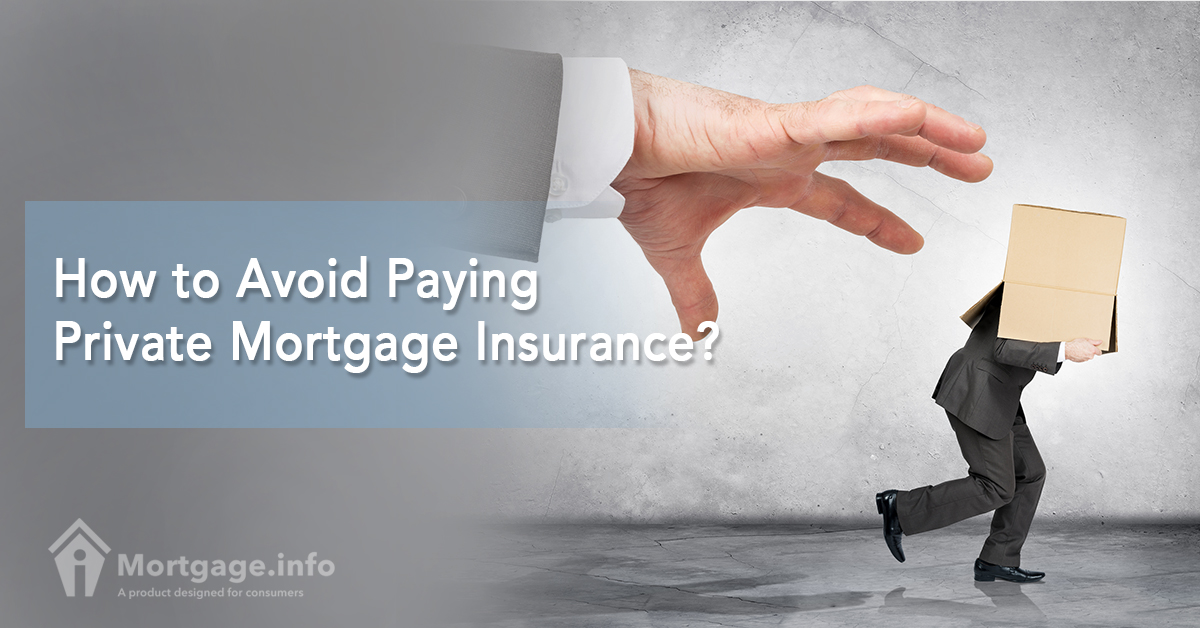
Paying private mortgage insurance is something most people try to avoid. Luckily, there are more strategies than just putting more than 20 percent down on the home, which most people cannot afford. With a little creativity, you can find ways to avoid this insurance which can add a significant amount of money to your mortgage payments each month.
What is Private Mortgage Insurance?
First, let’s look at what private mortgage insurance is and why you would need it. This insurance is generally used for conventional loans as it protects these lenders against default when you put less than 20 percent down on the home. The insurance, called PMI, that lenders require you to purchase helps to offset the costs the lender experiences if you default on the loan. This insurance helps the lender minimize the losses it experiences when you default because typically foreclosed homes sell for 20 percent less than their value. This is due to the damage they go through in the foreclosure or vacancy process.
Strategies to Avoid PMI
The first and most obvious way to avoid PMI is to put more than 20 percent down on the home. You will not pay the insurance for any length of time if you do this.
If you cannot afford 20 percent, but can get close to that amount, you can at least minimize the amount of time you must make the insurance payments. Once your loan-to-value is less than 80%, you are free to cancel PMI and stop making the premium payments.
Not everyone will be able to put down 20 percent or even close to that amount. In these instances, the following options are available:
- Opt for Lender Paid Mortgage Insurance – It is an option to have the lender pay the mortgage insurance premiums for you. The lender will pay the entire premium up front. They do not do this out of the goodness of their own heart, though. In exchange for the insurance payment, the lender will increase your interest rate slightly. You can negotiate with the lender how much of an adjustment they make to help make it affordable for you.
- Secure a VA loan – If you are a veteran, the VA loan does not require you to put any money down on the home and it also does not require PMI. They do have a funding fee that you pay at the closing or wrap into your loan amount, but there are no monthly fees you must pay to keep the loan. Of course, you must be a veteran to secure VA financing.
- Secure two mortgages – When you purchase a home, you generally secure a first mortgage only. If you have good credit and a low debt ratio, though, you might be able to borrow the down payment as well. This is called a Piggy Back loan. The second mortgage serves as the piggy-back and gives you the money you need for the down payment. The most common Piggy Back Loan is the 80/10/10. In this case, the first mortgage provides 80% of the financing, 10% comes from the second mortgage, and the final 10% comes from your own down payment. There is never any PMI to pay in this case.
Making the Right Choice
Deciding whether or not you should pay private mortgage insurance or investigate your other options is a personal decision. Consider how long you plan to stay in the home to determine the right choice for you. If you know you will move in the near future, opting for the Lender Paid Mortgage Insurance is not a bad idea because you will pay the higher interest rate for a short amount of time. Chances are you will make out on the deal because you will sell the home before you pay enough interest to equal the amount of the insurance.
If you know you will stay in the home for the long-term, taking the higher interest rate might not be your best option. In this case, choosing the Piggy Back Loan could work out better for you. If you cannot put 10 percent of your own money down, you can consider down payment gifts from relatives or your employer or paying the PMI for the short-term. If the value of your home increases over time, you might be able to refinance out of the PMI long before the amortization table you received at closing determined that you would hit below an 80% LTV.
Weighing the pros and cons of each situation can help you decide what is right for you. The good news is that even if you do pay the Private Mortgage Insurance, by law it gets canceled once you are at a 78% LTV. You will never be stuck paying the insurance for the life of your loan as long as you make your payments on time!
